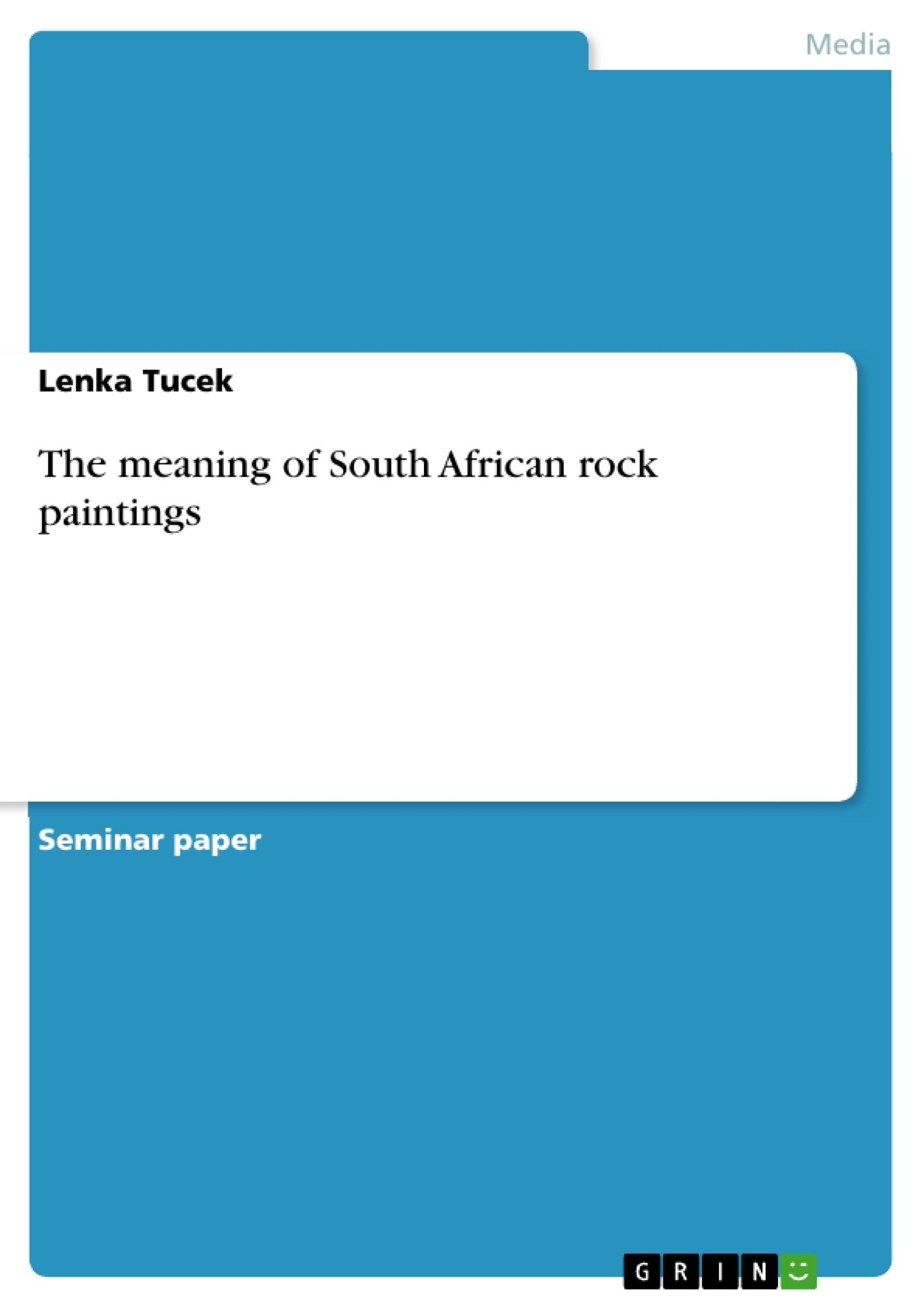One aspect of the wealth of material evidence left behind by the early people are the pictures in south african rock art. They occur in paintings and engravings. In 1996 the total number of sites in South Africa was estimated to be a little over 10 000 but the actual number of sites is significantly undercounted. It is still not known exactly when the artists started to make rock art, although new techniques of radiocarbon dating, using very small samples of paint, open the possibility of an absolute chronology. The oldest example of rock art in Africa was found in 1969 by Eric Wendt in the southern region of Namibia at a site called Apollo 11. After various datings, mainly with the radiocarbon method, archaeologists concluded that the rock art tradition in southern africa is at least 27 500 years old. In South Africa the oldest dated rock art is an engraving in the Northern Cape which was found on a small slab of dolomite at the Wonderwerk Cave south of Kuruman. It has a radiocarbon date of c.10 200 BP. Rock paintings are found in the mountainous parts of the subcontinent in abundant rock shelters and shallow overhangs, while engravings were generally made on the interior plateau of South Africa. There are about 1600 paintings in South Africa. In this assignment I will focus on the meaning of rock paintings, on the specific symbols and their importance for the early people. In Chapter Two, I provide a short introduction about the artists and their methods. Then I will explain the three important approaches to reveal the meaning of rock art described by Lewis - Williams and give some examples of misinterpretations of rock paintings. Chapter Three deals with the spiritual world and shamanism in the society of the Bushmen. In the fourth chapter the state of trance and the trance dance are described, which are important key parts for understanding rock art. Chapter Five shall point out the symbolism of the eland - antelope in addition to animal power in general. This symbol is of great importance and represented relatively frequent in the art. These symbols and the discussion of their meanings seem to be a representative selection, to help better understand the spiritual background of south african rock art and its meaning.
Table of Contents
- Introduction: Pictures from the Past
- Discovering rock art
- The spiritual world and shamanism
- Trance
- The eland symbol and animal power
- Conclusion
Objectives and Key Themes
This assignment aims to delve into the deeper meaning of South African rock paintings, specifically exploring the symbols, their significance to early peoples, and their connection to spiritual beliefs and practices. The author examines various aspects of the art, including the artists, their techniques, and different interpretations of the paintings.
- The spiritual world and shamanism in San society
- The role of trance and trance dance in understanding rock art
- The symbolism of the eland and animal power
- Different approaches to interpreting rock art
- Misinterpretations of rock art and the importance of understanding San cultural context
Chapter Summaries
- Introduction: Pictures from the Past: This chapter introduces South African rock art, providing background information on its prevalence, dating techniques, and the focus of the assignment on understanding the meaning behind the paintings.
- Discovering rock art: This chapter explores the different groups responsible for South African rock art, focusing on the San and their techniques. It delves into the use of pigments and the three main approaches to interpreting rock art: aesthetic, narrative, and interpretative.
- The spiritual world and shamanism: This chapter discusses the importance of the spiritual world in San society and the role of shamen as intermediaries between the material world and the spiritual realm. The chapter emphasizes the link between shamanistic experiences, trance, and the creation of rock art.
Keywords
This work primarily focuses on South African rock art, specifically exploring the San culture and their shamanistic practices. Key themes include the spiritual world, trance, animal symbolism, particularly the eland, and the interpretation of rock art through different approaches. The study also highlights the importance of understanding the San cultural context to avoid misinterpretations of the art.
- Citar trabajo
- Lenka Tucek (Autor), 2001, The meaning of South African rock paintings, Múnich, GRIN Verlag, https://www.grin.com/document/20049



